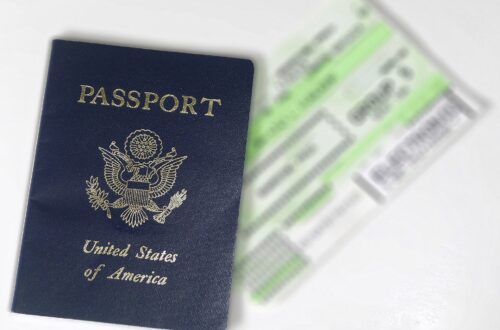
Unwind in Uruguay
3 Different Regions. 3 Different Vibes.
So you’ve decided to extend your day trip from Argentina? Or maybe you’re touching down in Uruguay first. Either way, there’s enough here to fill however much time you’ve allotted. One-of-a-kind monuments, amazing beaches, quiet colonial settlements; Uruguay has more to offer than just vibrant Montevideo. This tiny country packs a lot into such a small package. Follow along for your guide through some of Uruguay’s top spots!
One of Uruguay’s best selling points, in my opinion, is they have a serious bus system in place that makes getting from region to region incredibly easy and safe. So no need to worry about booking cross-country flights in advance. All of my bus tickets were purchased with no issues within hours of needing them. Being one of the smallest South American countries definitely helps. For reference, the entire country is about the size of Washington state. Now let’s start the journey!
COLONIA
If you’re coming from Buenos Aires, head to the ferry port in Puerto Madero. A quick one-hour ferry will get you across the Rio de La Plata to Colonia del Sacramento, Uruguay, located in the department of Colonia. I booked my ticket through Colonia Express. Your other comparably priced option is Buquebus. If you’re day-tripping, you can pay a few dollars to leave your bags at the port instead of toting it around town. Now, it’s time to see the sights!
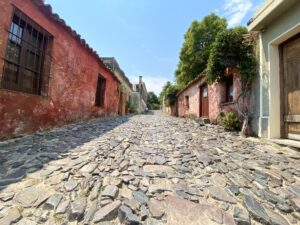
Colonia del Sacramento is one of the oldest cities in the country, which means lots of history. From the port, it’s a short 10-minute walk to the historic center, so you don’t need a taxi to get around. Head to Barrio Historico, the Old Town, to stroll the cobbled streets and see what’s left of the original city. This is the last remaining neighborhood from when the country was under Portuguese rule. You’ll definitely see influences in the architecture and how it contrasts with the rest of the city. Barrio Historico is full of ruins including the city wall and gate, the main convent, even bullrings. This town is so picturesque with bougainvilleas everywhere and tree-lined streets, so bring your tripod! Have lunch at an old-fashioned outdoor café and be sure to check out the historic underground wine cellars. The old town has several BnB’s if staying overnight is in your plan; or you can find plenty hotels throughout the modern city. Be prepared to talk, as the locals love striking up conversations. If you’re looking to explore more of the country, this is the best place to start as Colonia is not only a ferry port, but the start of two major highway systems.
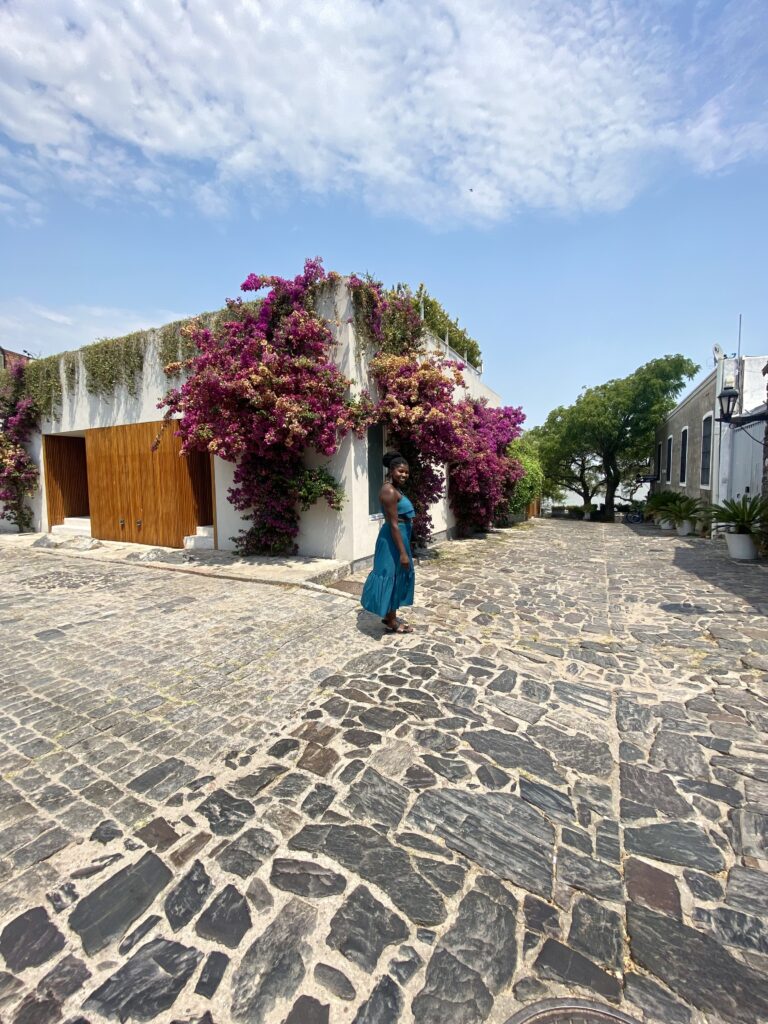
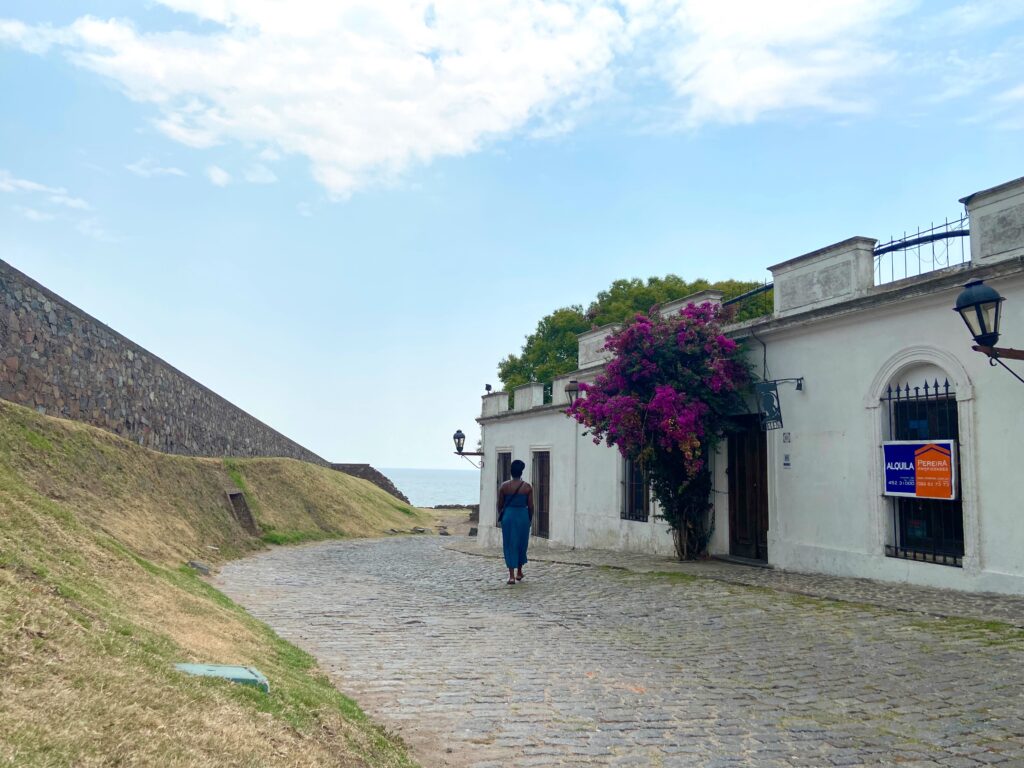
MONTEVIDEO
Once you’ve seen enough of Colonia, head to the bus station, which is only one block from the ferry port. A 2-hour bus ride will get you to Uruguay’s capital, Montevideo, which is in the department of the same name. You have several options to book this ticket, but they all cost about $10 USD to drop you off at the Montevideo city center. This isn’t an old city bus, it’s a nice, new comfortable coach bus, complete with usb outlets for those still traveling without a portable charger! I booked with COP, but at the ferry port, all the companies are all lined up counter to counter.
After being dropped off at the downtown Tres Cruces bus station, the world is your oyster. Tres Cruces is also a shopping center, so feel free to snag some souvenirs before you leave! Being the capitol, makes Montevideo a typical tourist go-to, piling a lot of Uruguay’s top things to do in one city. So there’s plenty to do around town at whatever pace you want. If you’re in need of some rest, head over to Playa Ramirez or Playa Pocitos and take in all the sun you need. Within walking distance of Pocitos is the colorful Montevideo sign, so bring your camera! Both beaches are adjacent to the famous La Rambla, so you can stroll as much of this 13-mile (22km) promenade as you wish. Barrio Pocitos is where you’ll find more upscale lodging and fancy restaurants. I found this neighborhood to be incredibly safe, even when walking outside at night.
If you’re up for more sightseeing, Independence Plaza in barrio Centro is the place to head for some history. While you’re there, tour Teatro Solis; the oldest opera house in the Americas. Lastly, add a tour of Estadio Centenario while you’re in town. Not only is it the biggest stadium in the country, it’s also home to the first ever FIFA World Cup in 1930! After you’ve shopped your heart out, head back to the beach, because why not?
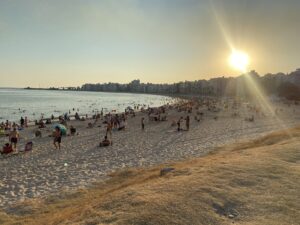
PUNTA DEL ESTE
The capitol has a lot to offer, but once you’re ready to turn down head back to Tres Cruces bus station. Being a larger bus station, means you have more companies to choose from. The ticket still shouldn’t cost you more than $10-15USD. Another 2-hour ride will get you to Punta del Este in the Maldonado Department. You’ll hear it referred to as the “Miami Beach of South America” or “Monaco of the South”. You’ll quickly see why! But I prefer to just call it the Punta del Este of Uruguay! It’s a lively, upscale beach town that never sleeps. And it definitely has a South Beach price tag. While you’re here, be sure to snap a pic at La Mano (The Hand) sculpture and walk the Laguna Garzon Bridge.
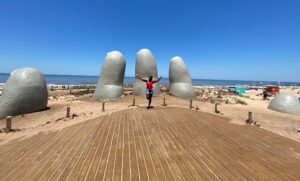
An absolute must is Casapueblo. Formerly the home of artist Carlos Paez Vilaro, it is now a hotel and restaurant. If it’s in your budget, it’s worth getting an ocean view room. If not, have dinner and take in a sunset. The stark white form overlooking the ocean definitely has a Santorini vibe without the Santorini price! Casapueblo is definitely worthy of a stop on your visit.

Now you’ve found your way around the Uruguayan coast, from Colonia to Montevideo to Maldonado! From Punta del Este, you can head back to the bus station or let the wind guide you! Heading back west to Montevideo will allow you to board a ferry to numerous Argentinian destinations. Read this if that’s your plan: Best Things to Do in Argentina! If you continue east, in less than two hours you’ll reach Brazil. Bom dia! Not only is Uruguay extremely safe, but each region has a very relaxed vibe, and the people are all so welcoming. While it’s one of the pricier South American countries, it is absolutely worth a visit. This guide will safely get you to all of Uruguay’s top things to do!


